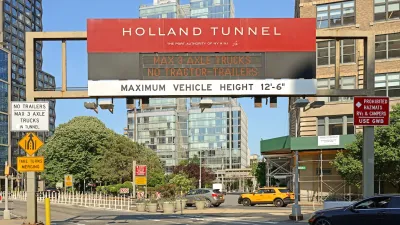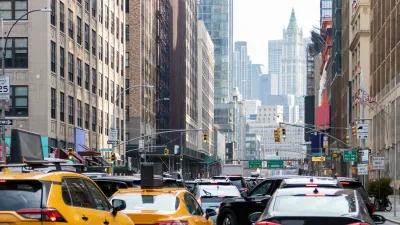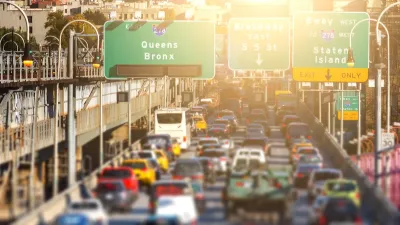Due to its successful application in cities such as London and Singapore, congestion charging has become the favored approach for changing driver behavior. However, a professor at Stanford University may have found a nicer way to change habits.
With efforts to impose congestion pricing in the United States having failed thus far, most prominently in New York City, Balaji Prabhakar, a professor of computer science at Stanford University may have found an incentive-based program to accomplish similar goals, reports John Markoff.
Choosing the carrot over the stick, Stanford deployed a new system designed by
Dr. Prabhakar's group this spring with the aim of reducing traffic congestion at peak hours. "Called Capri, for Congestion and Parking Relief Incentives,
it allows people driving to the notoriously traffic-clogged campus to
enter a daily lottery, with a chance to win up to an extra $50 in their
paycheck, just by shifting their commute to off-peak times."
"Dr. Prabhakar is a specialist in designing computer networks and has conducted a variety of experiments
in using incentives to get people to change their behavior in driving,
taking public transit, parking and even adopting a more active
lifestyle. Unlike congestion pricing,
which is mandatory for everyone and usually requires legislation,
"incentives can be started incrementally and are voluntary," he said."
"Moreover, systems based on incentives can offer a huge advantage in
simplicity. Until recently, the Stanford system required sensors around
campus to detect signals from radio-frequency identification tags that
participants carried in their cars. But the need for such an
infrastructure has vanished now that so many drivers carry smartphones
with GPS chips or other locaters."
While Markoff notes that Stanford plans to expand the popular program soon to cover parking on campus, experts disagree on whether an incentives-based system could work as well in a city such as New York or San Francisco.
FULL STORY: Incentives for Drivers Who Avoid Traffic Jams

Alabama: Trump Terminates Settlements for Black Communities Harmed By Raw Sewage
Trump deemed the landmark civil rights agreement “illegal DEI and environmental justice policy.”

Planetizen Federal Action Tracker
A weekly monitor of how Trump’s orders and actions are impacting planners and planning in America.

The 120 Year Old Tiny Home Villages That Sheltered San Francisco’s Earthquake Refugees
More than a century ago, San Francisco mobilized to house thousands of residents displaced by the 1906 earthquake. Could their strategy offer a model for the present?

Housing Vouchers as a Key Piece of Houston’s Housing Strategy
The Houston Housing Authority supports 19,000 households through the housing voucher program.

Rural Population Grew Again in 2024
Americans continued to move to smaller towns and cities, resulting in a fourth straight year of growth in rural areas.

Safe Streets Grants: What to Know
This year’s round of Safe Streets for All grant criteria come with some changes.
Urban Design for Planners 1: Software Tools
This six-course series explores essential urban design concepts using open source software and equips planners with the tools they need to participate fully in the urban design process.
Planning for Universal Design
Learn the tools for implementing Universal Design in planning regulations.
Clanton & Associates, Inc.
Jessamine County Fiscal Court
Institute for Housing and Urban Development Studies (IHS)
City of Grandview
Harvard GSD Executive Education
Toledo-Lucas County Plan Commissions
Salt Lake City
NYU Wagner Graduate School of Public Service





























